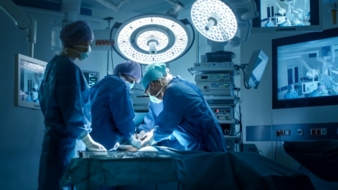16.11.23 – Textiles Intelligence
Challenges of medical recycling
Producers and users of single-use medical nonwovens face battles in overcoming challenges of recycling as they prepare for the introduction of new EU legislation aimed at addressing the problem of textile waste, according to “Single-use medical nonwovens: the pros and cons” – a 22-page report from the global business information company Textiles Intelligence.
Critical need: recycling single-use medical nonwovens
Single-use medical nonwovens are widely used in health care settings because they offer a number of benefits compared with reusable medical textiles. Specifically, as single-use items, they are discarded after use and so they do not have to be laundered. Moreover, because they are discarded, they are considered to be more hygienic and pose less of a health risk. Furthermore, they are more absorbent, breathable, comfortable and convenient to use than reusable medical textiles. Also, they are lighter in weight, able to withstand higher temperatures, more stable and more resistant to abrasion. However, most single-use medical nonwovens are difficult to recycle at the ends of their useful lives because they are made using complex mixtures of materials – and existing recycling facilities are unable to work with such mixtures. Medical grade face masks, for example, contain several different components, including metal nose clips and elastic cords. Just a small percentage of elastic in an otherwise all-polypropylene nonwoven product is sufficient for the product to be rejected at a recycling facility. The challenges of recycling single-use medical nonwovens are compounded by a stigma in health care settings associated with recycling such products, given concerns over hygiene and safety. The challenges are also compounded by waste misclassification in health care settings. For example, it has been found that large volumes of medical textile waste are being inaccurately disposed of as hazardous waste. This is because safety and risk management are important priorities in health care settings and, often, there is a tendency to be overly cautious. Worryingly, if solutions to the challenges of recycling single-use medical nonwovens are not developed by 2030, these materials could be responsible for 1 m tons of plastic waste worldwide. But if this waste could be recycled and converted into new products, it could generate a value of more than 600m euros (US$ 643 m).
EU prepares legislation and the UK is getting started
The issue of single-use medical nonwovens is expected to be a focus for regulators in Europe under forthcoming EU legislation resulting from the publication of the EU Strategy for Sustainable and Circular Textiles. It is expected that the legislation will set out requirements for health care providers in Europe to recycle single-use medical textile waste produced at health care facilities. In response, several textile waste management specialists are trialling initiatives in Europe which are aimed at overcoming the challenges of recycling single-use medical nonwovens. In the UK, for example, Thermal Compaction Group (TCG), based in Cardiff, UK, has launched an initiative in collaboration with the National Health Service (NHS) to convert single-use medical nonwoven waste into plastic bricks.In particular, TCG has installed specialist Sterimelt recycling units at a number of hospitals in the UK, including St Woolos Hospital in Newport. The units are capable of converting polypropylene into plastic bricks which can be used in the manufacture of products such as decking, fence posts and furniture and thereby give the polypropylene a second life. Elsewhere in the UK, some textile waste management specialists are pursuing initiatives which aim to reintroduce reusable medical textiles as viable alternatives to single-use medical nonwovens in the health care market. For example, “Revolution-ZERO”, based in Alton, UK, is partnering with the NHS to install advanced laundry facilities at hospital sites in order to decontaminate used medical textiles in preparation for their reuse, thereby avoiding the production of single-use medical nonwoven waste at the sites. Also, “Revolution-ZERO” is supplying hospital sites with locally sourced operating theatre drapes, surgical gowns, reusable face masks and other personal protective equipment (PPE). Despite these efforts, it is expected that a return to the wide scale use of reusable medical textiles is unlikely given the immense benefits of single-use medical nonwovens to health care providers. But for this expectation to come to fruition, it is critical that solutions to the challenges of recycling single-use medical nonwovens are developed.

